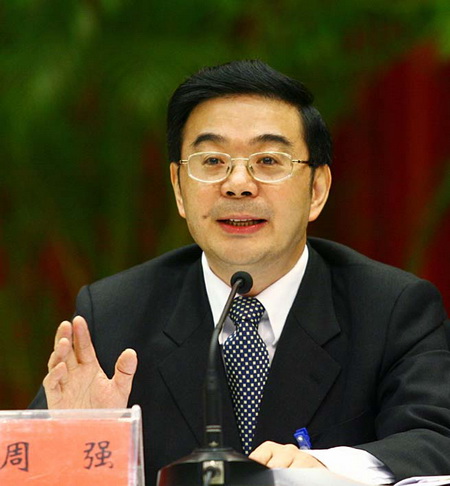YASH JOHRI explores the ramifications of the new China Open Trial Network, a website that live-streams proceedings in low courts across China.

The president of the Supreme People’s Court, Zhou Qiang announced on September 27 the launch of the China Open Trial Network, a web domain to live-stream court proceedings from across Chinese courts. The launch has created buzz in China and abroad, especially as to the purpose of the network. The new platform has largely been labeled as progress in the direction of increased judicial efficiency and transparency. However, a question remains as to whether the introduction of the network addresses the larger issues of legislative justice that erstwhile proponents of human rights and free speech such as Chen Guangsheng and Ai Weiwei have continuously drawn attention to.
Most court officials in China are appointed by the party machinery at the the local, provincial or central level. Therefore, the officials have to mete out justice largely in accordance with the wishes of their party bosses, given that the officials are so dependent on their party bosses for career advancement. This latest move towards increased transparency was first put forward in the section concerning judicial transparency in the 2010 and 2013 regulations of the Supreme People’s Court. The regulations deem whether or not court proceedings are fit to be broadcast. While under Xi Jinping’s leadership there has been consistent political support for increased judicial transparency, resulting in initiatives such as the Open Trial Network. According to these very regulations, court officials still have arbitrary authority to take down any broadcasts that the officials believe are unsuitable for viewing.
The Supreme People’s Court and all lower courts receive their mandate from the Chinese Communist Party. In the context of this reform process, court officials will need to develop the capacity to understand what material is not in the interest of the Party to store or broadcast on this new platform. Therefore this move can be seen as one largely benefitting the common citizen who’s been frustrated by inefficient court processes, but one carefully managed by the Party to preempt any challenges to its legitimacy and authority in the eyes of the people.
In Zhou Qiang’s address at the opening of the Open Trial Network, he emphasized that the legal needs of China’s masses are increasing and their demands for efficiency are growing. He goes on to say that the web domain is one of the steps being taken to address these problems. In theory, transparent processes and live broadcasts of proceedings would incentivize judges across the country to comply with court procedures upholding the rule of law. Through these incentives, the central party authorities aim to increase their ability to influence developments in the lowest courts. Given that the party machinery appoints local and provincial judges, it in turn has influence on the workings of the courts. With such a system institutionalised, local and provincial interests and power structures disrupt the impartial judicial process that Beijing supposedly wants to promote. Therefore the Open Trial Network can be seen as an initiative to increase Beijing’s influence under the pretense of improving the efficiency of the system.
As stated earlier, a big priority in judicial reform initiated by the central government is to standardize judicial decision-making process. An article by a party official in the People’s Daily published one day prior to the announcement of the China Open Trial Network echoed this sentiment. The article, written by Party Secretary of the Tianjin Higher People’s Court Gao Jinghong, emphasized the need for greater judicial standardization to improve the court’s credibility, accountability and to establish the court’s image of impartial justice in the eyes of the people. However, the network also increases the central government’s ability to supervise processes at the provincial level more effectively. Greater supervision from the central government also means giving the party another tool with which to monitor and shun dissent and taking influence away from provincial and local officials.
The introduction of the network is a welcome change for China’s slow moving and largely inefficient justice system, especially at its lower levels. However it is important to note that broadcasting and storing proceedings from every court signals an increased assertiveness on the part of Beijing, marking an Orwellian move to put eyes and ears in every courtroom across the country. However, over the past several decades, the Party’s reform measures although of autocratic nature have been very effective. The judicial network policy has the designs of effectively monitoring the distribution of impartial justice. Monitoring judicial processes, if conducted efficiently, could turn out to be a shot in the arm for citizens whose everyday lives are disrupted by the bureaucratic inertia they typically encounter in the courts. Therefore, while judicial reform has thus far steered away from the realm of human rights and free speech, this development has the potential to positively affect the citizens ability to receive swift justice.
Yash Johri is a senior at Georgetown University. Contact him at ymj3@georgetown.edu
The opinion in this article is the author’s own. It does not necessarily reflect the view of China Hands.

